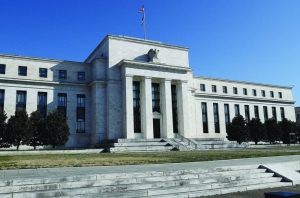Consumers curb US economic growth in first quarter, inflation cools

The US economy grew more slowly in the first quarter than previously estimated after downward revisions to consumer spending and a key measure of inflation ticked down, keeping the Federal Reserve on track to possibly begin cutting interest rates at least once before the end of the year.
Gross domestic product — the broadest measure of economic activity — grew at an 1.3% annualised rate from January through March, the Commerce Department reported on Thursday, down from the advance estimate of 1.6% and notably slower than the 3.4% pace in the final three months of 2023.
The first-quarter growth downgrade suggests the US central bank’s aim of gradually cooling the economy through high interest rates is having an impact as consumers increasingly balk at higher prices, although it remains uncertain whether the weakening trend in inflation will continue. Corporate profits dropped for the first time in a year, falling 0.6% to $3.39tn from the fourth quarter’s record high.
“The downward revision to economic growth as well as smaller downward revisions to inflation make the Fed a little more likely to start reducing interest rates by September,” said Bill Adams, the chief economist at Comerica Bank. “With the economy operating in low gear, a margin of slack capacity is opening up, and consumers are feeling less flush.” That was illustrated by data from the National Association of Realtors on Thursday that showed contract signings for US
home purchases fell by the most in three years in April and the overall level of activity was the lowest since the onset of the Covid-19 pandemic in the spring of 2020.
Details of the GDP report showed that consumer spending growth, revised down by half a percentage point to a 2.0% annualised rate, mostly reflected a larger-than-earlier-reported drop in household spending on goods. Outlays for big-ticket durable goods like motor vehicles and parts dragged on growth by the most since the third quarter of 2021. That drag outpaced upward revisions in the report to business investment, driven mostly by spending on Artificial Intelligence and other technologies, and residential investment outlays, which reflected increased single-family homebuilding.
A measure of inflation during the first quarter was also revised down to 3.3% from 3.4%, the stiffest quarterly price-pressure growth in a year.
After easing through much of last year, measures of inflation came in higher than expected to start 2024, driving Federal Reserve policymakers to push back expectations for when they’ll be able to pivot to interest rate cuts.
Yields on Treasury securities fell by the most in about two weeks as investors’ hopes for at least one rate cut this year were bolstered. US stocks, meanwhile, fell for a second consecutive day, and the dollar was broadly weaker.
Investors in contracts tied to the Fed’s policy rate slightly added to just about even odds that the central bank could begin to cut rates in September, but still forecast no more than two rate cuts by the end of 2024.
The downward revision to GDP brings the first-quarter growth rate to the lowest since the second quarter of 2022, when the economy contracted, and leaves output below the 1.8% rate that officials at the Fed see as its longer-run, non-inflationary potential.
Gross domestic income grew 1.5%, down sharply from the fourth quarter’s 3.6% rate and the lowest since the second quarter of 2023. The average of GDP and GDI, also referred to as gross domestic output and considered a better measure of economic activity, was 1.4% — also the lowest in three quarters.
The report had one indication of a weakening demand measure that has been on the radar of US central bank officials, including Fed Chair Jerome Powell, as they look for the pace of consumption to ease up and help lower inflation.
Growth in final sales to private domestic purchasers was revised down to 2.8% from 3.1%. That figure — now revised to the lowest since the second quarter of 2023 — was one that Powell cited at a recent press conference, saying it “usually sends a clearer signal on underlying demand.” The soft start to the year is not expected to have persisted into the current second quarter, however, thanks in part to continued strength in the job market.
That robustness was evident in the number of Americans filing new claims for unemployment benefits last week. While jobless claims ticked higher, the underlying strength in the labour market still shows signs of persisting and should continue to support the economy.
Initial claims for state unemployment benefits rose 3,000 to a seasonally adjusted 219,000 for the week ended May 25, the Labor Department said on Thursday. Economists polled by Reuters had forecast 218,000 claims.
The so-called continuing claims tracking those who collect benefits beyond the first week rose 4,000 to a seasonally adjusted 1.791mn during the week ending May 18, the claims report showed.
The labour market is gradually rebalancing in the wake of 525 basis points worth of rate hikes from the Fed since March 2022 to slow demand in the overall economy. The level of layoffs remains muted overall, however, with the readjustment more a result of less hiring.
“Momentum is gradually slowing as labour conditions cool, with younger and lower-income consumers exercising more scrutiny and businesses reevaluating their talent needs as they face higher financing costs and cooler demand,” said Lydia Boussour, a senior economist at EY-Parthenon.
A separate report on Thursday showed the goods deficit in April, the gap between exports and imports, widened to the highest level since May 2022, as strong domestic demand for imports was not matched by export trade.



